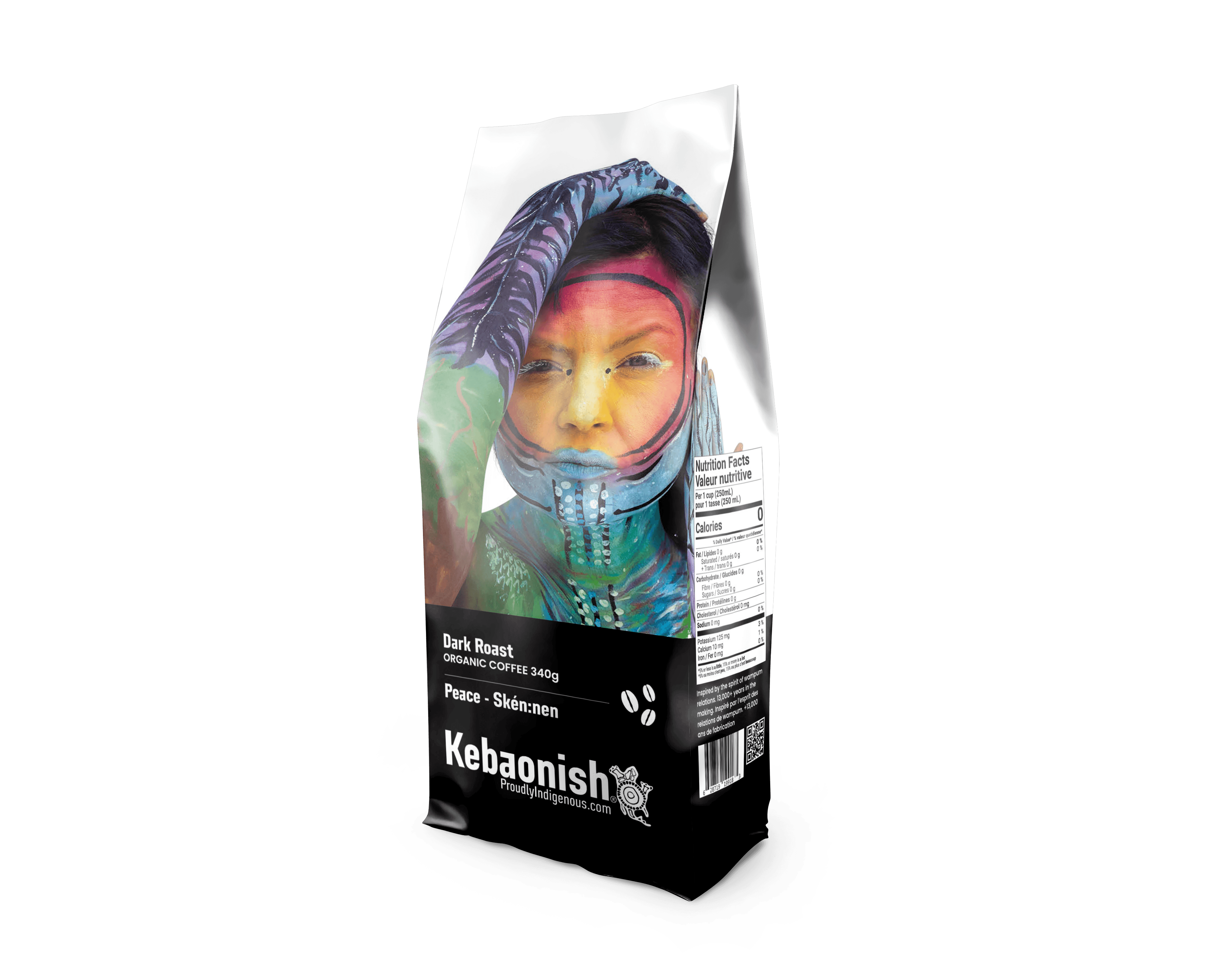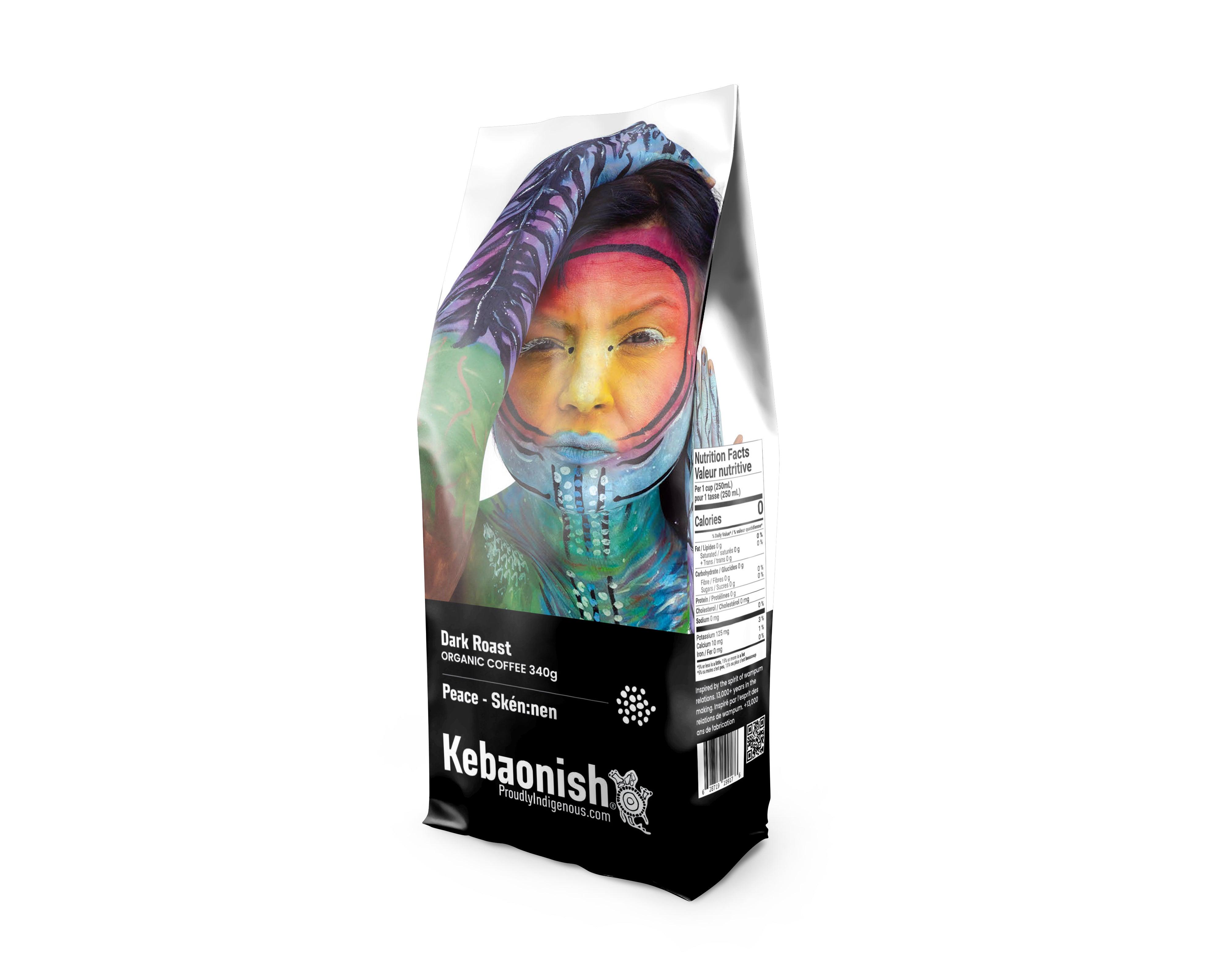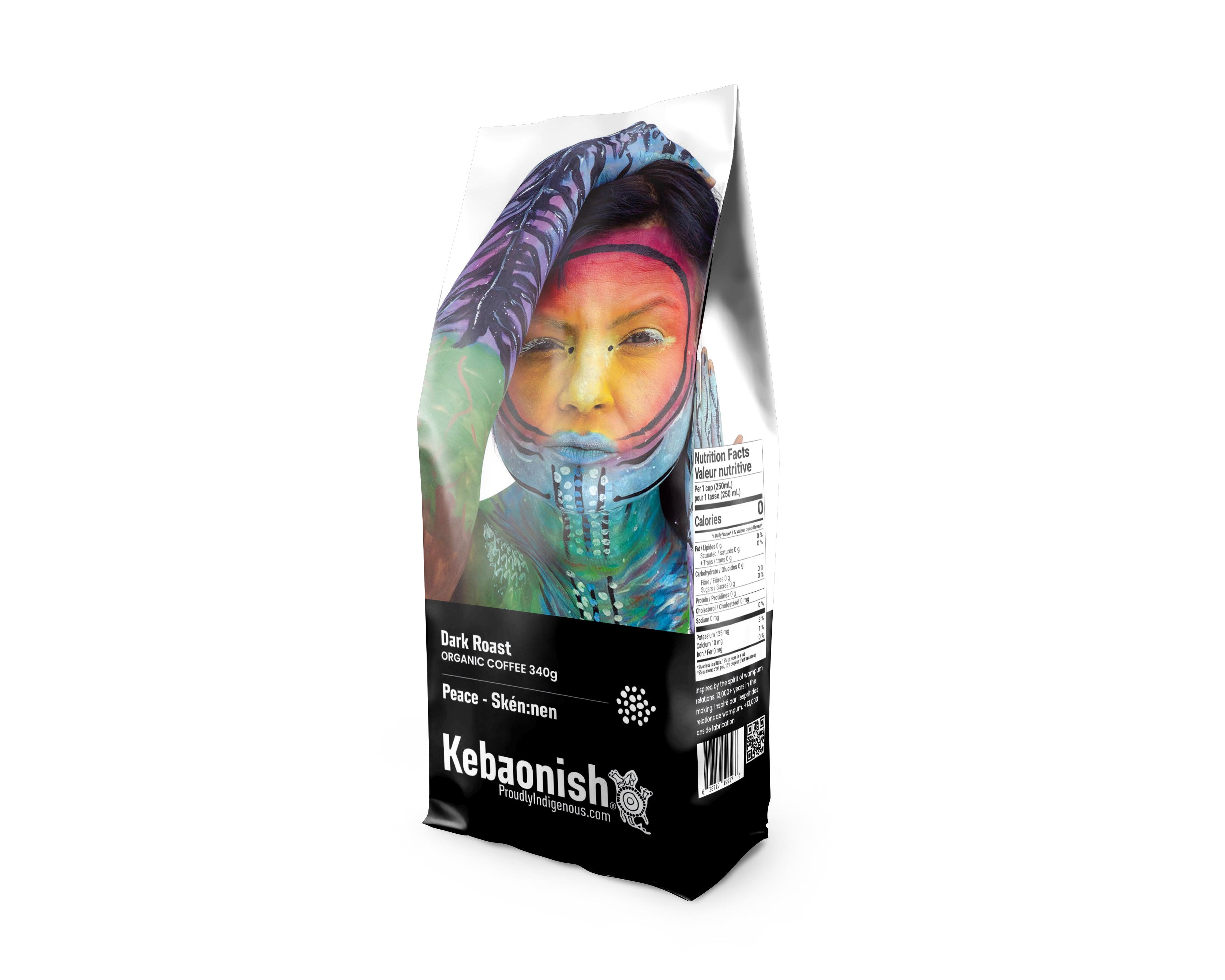






ORGANIC
Peace (Skén:nen)
Organic Dark Roast 11.99 oz/ 340 g bag
Welcome to the world of Kebaonish Organic Peace Coffee. Inspired by the spirit of the Two-Row Wampum belt, this coffee blend embodies the essence of peace, cooperation, and inclusiveness needed for societies to flourish and thrive. Our Peace Coffee is thoughtfully crafted with a Dark Roast.
Just as peace brings depth and resilience to communities, this roast offers a smoky and robust taste while still maintaining a smooth and inviting character.
Our coffee beans are premium, certified organic, and ethically sourced from Colombia, Peru, and Guatemala. They are then roasted and packaged in Concord, Ontario.
Pairs well with

Description
Dark Roast

Inspiration
Two-Row Wampum

Artist


